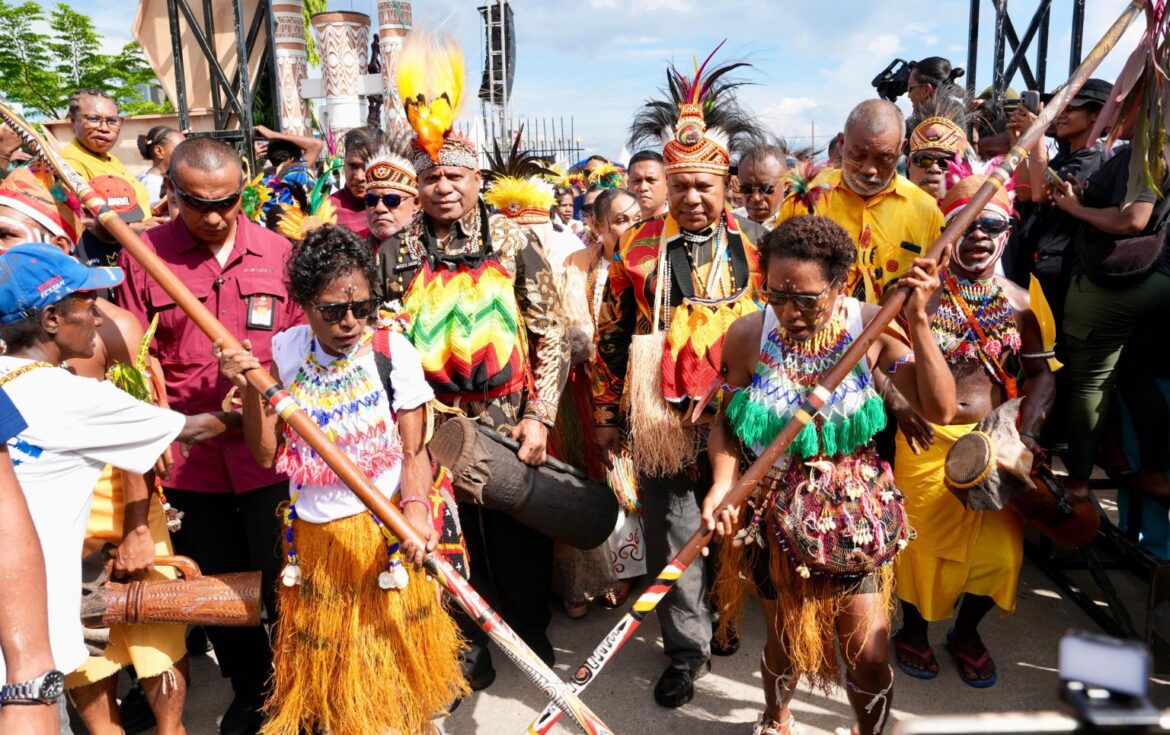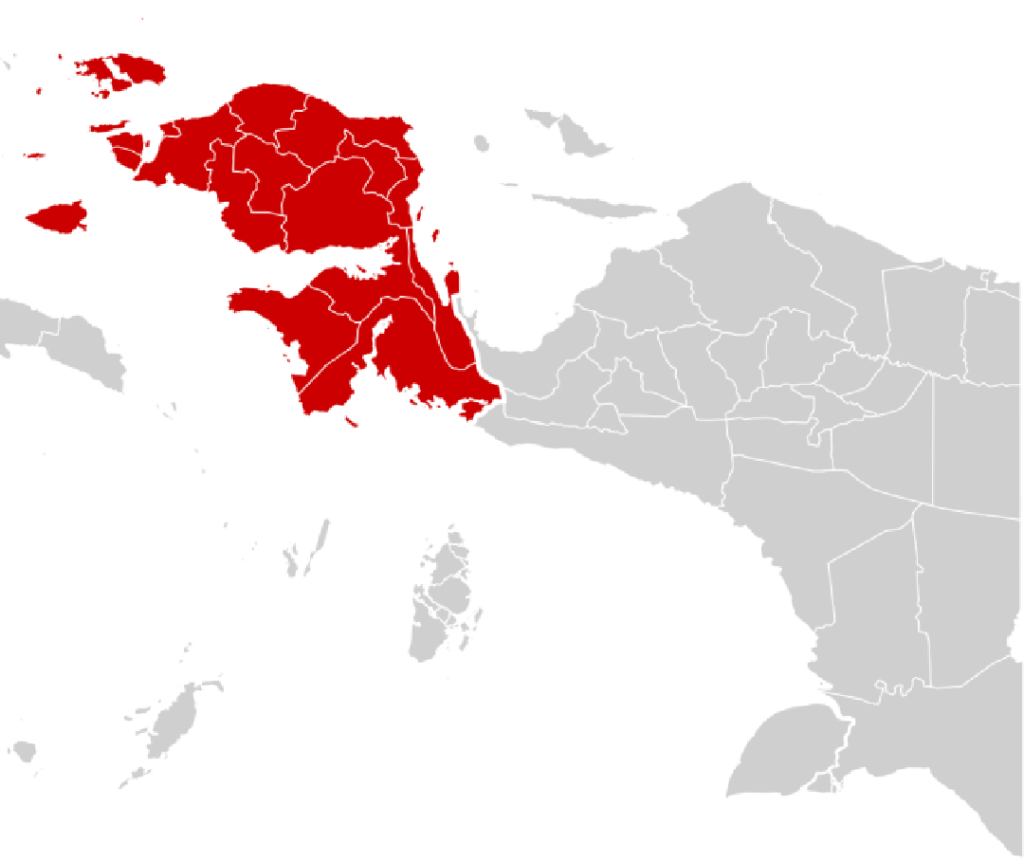As dawn broke over Jayapura on October 31, 2025, the soft morning mist lingered above the green hills surrounding the city. The sound of traditional drums, tifa, echoed across the crowd gathered at the provincial government compound. Thousands of residents came together for the “Pesta Rakyat Papua,” a people’s celebration marking progress and hope.
When Governor Mathius Fakhiri took the stage, his words immediately captured the audience’s attention. With a firm but warm tone, he declared, “Papua is not a burden but a blessing for Indonesia.”
The crowd erupted in applause—not just for the statement itself, but for what it represented: a long-awaited shift in how Papua is seen, not as a distant periphery but as a vital contributor to the nation’s growth.
Fakhiri’s message was both emotional and strategic. For too long, Papua has carried the stereotype of being Indonesia’s “problem child,” a region associated with isolation, poverty, and conflict. But under his leadership, the narrative is being rewritten—one that places Papua as a partner in national progress, built through genuine collaboration between the government and the indigenous people known as Orang Asli Papua (OAP).
The Meaning Behind the Message
Governor Fakhiri’s declaration was not a mere slogan. It was a call for transformation—a reminder that Papua’s development cannot be measured only in economic numbers or infrastructure but in the empowerment of its people.
“Different tribes, different languages, different faiths,” he said, “yet we share one land, one home, one family in Tanah Papua.”
Behind those words lies the essence of his administration’s approach: building a government that listens to, includes, and uplifts its citizens. Fakhiri’s governance platform rests on five key pillars:
- Human resource and education development
- Equitable healthcare services
- Strengthening people’s economy
- Expanding infrastructure and connectivity
- Ensuring clean and transparent governance
These priorities form what he describes as the roadmap toward a “bright, smart, friendly, and harmonious Papua.” Each element connects to a broader mission—to make Papuans not passive beneficiaries but active actors in shaping their future.
Collaboration as the Core of Leadership
In his speech, Fakhiri emphasized that real progress requires collaboration—not only between levels of government but also with communities, traditional leaders, youth, and women’s organizations. His leadership style is rooted in open dialogue and mutual trust. “We are not the best,” he admitted, “but we will always do our best. We lead with compassion and listen with humility.”
This approach has set a new tone in Papua’s politics. Instead of imposing programs from above, his administration seeks to co-create policies with local participation. Community input, he said, is no longer an afterthought; it is the foundation of policy-making.
Through this inclusive model, Fakhiri hopes to restore confidence among Papuans who have long felt disconnected from state institutions. It’s a delicate balance—one that requires not only political will but also cultural sensitivity and constant communication.
Infrastructure That Connects People, Not Just Places
One of Papua’s most visible challenges has always been connectivity. Vast mountains, deep valleys, and scattered settlements make logistics expensive and difficult. But Governor Fakhiri sees these geographical barriers not as limitations but as opportunities to innovate.
Under his direction, infrastructure projects—roads, bridges, ports, and clean water systems—are being aligned with local needs and cultural context. The aim is not simply to build physical structures, but to connect communities long isolated from each other and from economic centers.
“When you build a road in Papua,” Fakhiri explained, “you are not just connecting villages—you are connecting hopes.”
That philosophy underscores why local participation is essential. Roads built with local labor generate jobs and ownership. When OAP communities help design and maintain infrastructure, the projects are more sustainable and better suited to the environment. It’s a model of development that prioritizes both inclusion and longevity.
Empowering Papuans to Lead Their Own Economy
Economic empowerment is another cornerstone of Fakhiri’s vision. He wants Papua to evolve from a region dependent on central government aid into one that drives its own prosperity. His message is clear: “Papua must not only receive; Papua must also create.”
The provincial government has launched initiatives to strengthen micro and small enterprises, promote local agriculture, and enhance access to financial services. By supporting indigenous entrepreneurship—from coffee farmers in the highlands to craftsmen and women in coastal towns—Papua can build an economy rooted in its own resources and creativity.
Fakhiri describes this as “Papua becoming master in its own land.” It’s a powerful phrase, reflecting both pride and responsibility. To achieve this, his administration works closely with local cooperatives, youth innovators, and traditional communities, ensuring that economic growth benefits the people first, not outsiders.
Respecting Culture, Strengthening Identity
Beyond economics, Fakhiri knows that sustainable progress must respect Papua’s cultural soul. His governance model gives formal recognition to adat (customary) institutions—local systems of authority that have guided Papuans for generations.
He frequently consults elders and community leaders before implementing major policies. “Development that ignores culture will not last,” he noted, adding that harmony between modern governance and traditional wisdom is key to Papua’s success.
By integrating adat values with state programs, Papua can preserve its rich identity while moving confidently into the modern era. This is not merely about symbolism; it’s about legitimacy. When people see their traditions respected, they are more likely to trust and participate in government initiatives.
Challenges That Demand Perseverance
Despite the optimism, Fakhiri remains realistic about the obstacles ahead. Papua’s topography, infrastructure gaps, and limited institutional capacity pose constant challenges. Additionally, decades of mistrust and uneven development have created deep wounds.
He acknowledges that transforming vision into reality will take time. Transparency, consistent funding, and continuous engagement are crucial to maintaining credibility. More importantly, local human resources must be strengthened so that Papuans themselves can sustain progress long after programs end.
Observers note that Fakhiri’s biggest test will be translating inclusive rhetoric into measurable outcomes—schools that stay open, clinics that function, businesses that thrive, and roads that last. But his confidence lies in the people: “With unity and hard work, Papua can become a blessing for all of Indonesia.”
A Blessing for the Nation
Fakhiri’s leadership message has national resonance. Papua, rich in biodiversity, minerals, and cultural diversity, is often described as Indonesia’s final frontier. But Fakhiri reframes it as the frontline of Indonesia’s future—a region whose success will symbolize the nation’s ability to balance development with inclusion.
For Indonesia, a prosperous and peaceful Papua means more than regional stability. It represents the fulfillment of a national promise—that every province, regardless of geography, has equal dignity and opportunity. For Papuans, it means reclaiming ownership of their narrative and proving that they are capable partners in the republic’s growth.
Conclusion
As the celebration in Jayapura ended, the crowd dispersed with a sense of renewed hope. The governor’s message lingered in the air—a reminder that Papua’s destiny is not written by others but shaped by its people.
“Papua is not a burden, but a blessing,” Fakhiri had said. Those words now echo across villages and valleys, inspiring a movement of pride and participation.
For Papua to truly become the blessing it can be, collaboration must remain the compass: the government must listen and deliver, communities must engage and innovate, and local wisdom must guide every step.
The path ahead is long, but the direction is clear. With shared determination, Papua’s mountains will no longer symbolize isolation—they will stand as monuments to unity, resilience, and a brighter Indonesian future.


